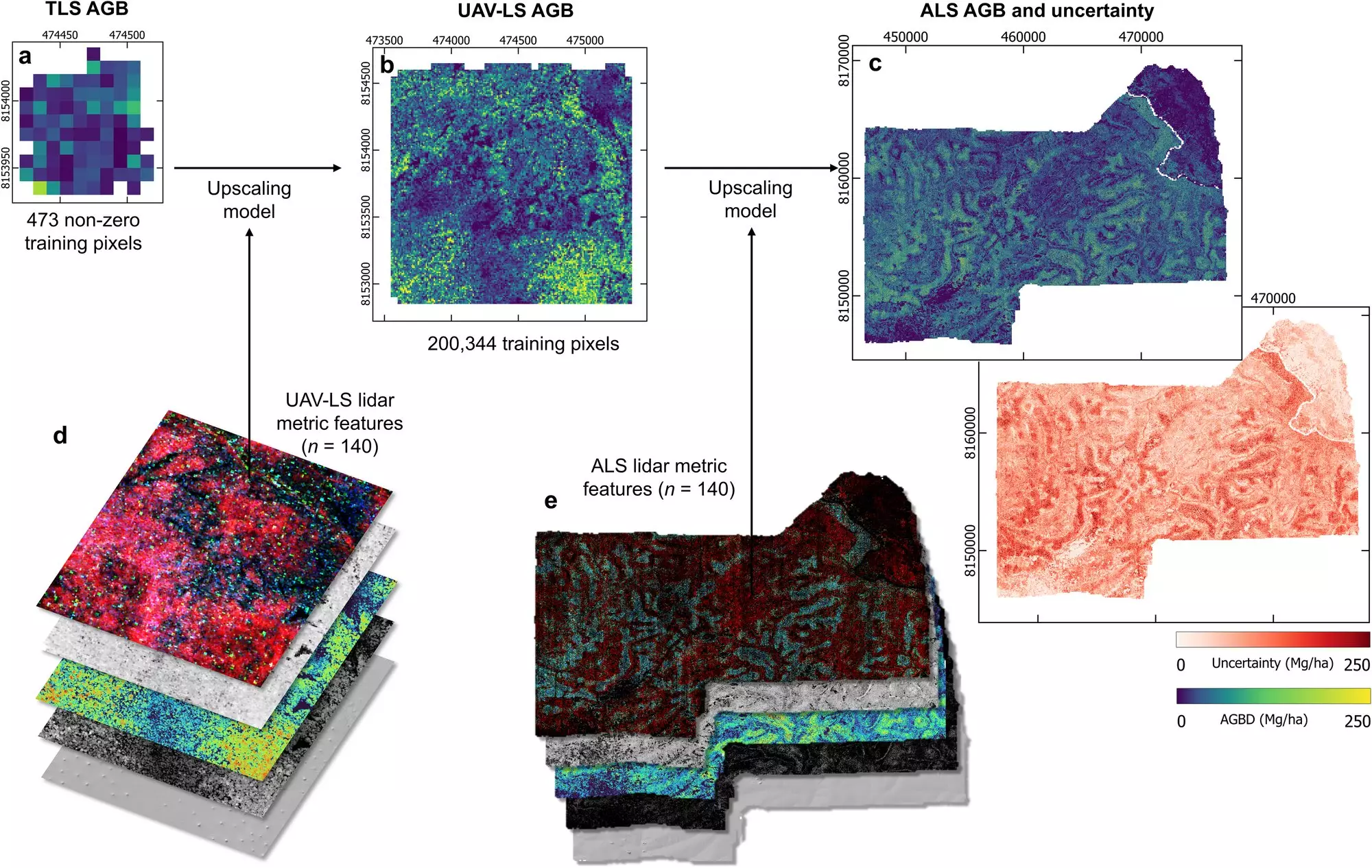The groundbreaking research spearheaded by an international team, including pivotal contributions from UCL researchers, has cast a new light on the carbon sequestration capacities of Mozambique’s miombo woodlands. This study, recently published in *Communications Earth & Environment*, reveals that these extensive woodlands, which stretch across much of Sub-Saharan Africa, may sequester significantly more carbon than previously estimated. Traditional carbon measurement techniques have consistently undervalued these ecosystems, and this new assessment suggests that the miombo’s carbon storage capabilities are not just impressive; they are vital to combating climate change.
The miombo woodlands are more than just a natural treasure; they’re a lifeline for millions of people in Africa. These diverse ecosystems play critical roles in supporting local livelihoods, regulating climate and water, providing unique habitats, and holding deep cultural significance. Over the past few decades, however, extensive deforestation has diminished these woodlands from 2.7 million square kilometers to 1.9 million, which is a staggering loss roughly three times the area of the United Kingdom. This dramatic reduction accentuates the necessity for precise monitoring and valuation of these forests.
The Importance of Advanced Data Collection Techniques
Researchers employed innovative methodologies to gather and analyze data from over 8 million trees within the miombo woodlands near Gilé National Park, Mozambique. Leveraging ground-based and aerial laser scanning technologies, they captured approximately 450 billion 3D measurements across an area almost eight times larger than Manhattan. This unprecedented approach allowed the team to quantify aboveground biomass with a higher degree of accuracy than conventional carbon measurement techniques.
Traditional methods often rely on allometric equations, which correlate easily measurable tree features—like trunk diameter and height—to carbon storage. However, these methods tend to underestimate the biomass of larger trees, leaving a significant gap in our understanding of total carbon storage. By employing multi-scale lidar technology, this research offers a fresh perspective, providing estimates that reveal miombo woodlands store between 1.5 and 2.2 times more carbon than previously recognized.
Implications for Climate Change Mitigation
This transformative research holds profound implications for global climate initiatives. As countries strive to meet their carbon neutrality goals, the undervaluation of miombo woodlands can hinder progress. By extrapolating their findings to cover all miombo woodlands in Africa, researchers estimate that these ecosystems could hold an additional 13.6 billion metric tons of carbon dioxide equivalent in aboveground biomass—an amount staggering when compared to our global carbon budget.
The potential carbon release from the destruction of these forests could significantly exacerbate climate change, underscoring the urgency for governments, businesses, and financial institutions to prioritize their protection and restoration. The new data serves as a clarion call, emphasizing that miombo woodlands are crucial not just as passive observers in the climate crisis but as active players in carbon sequestration and mitigation strategies.
The Role of Technology in Environmental Solutions
The innovative methodologies employed in this research underscore a vital truth: technology has the power to enhance our understanding and management of natural resources. Co-author Professor Mat Disney from UCL Geography aptly stated that modern laser scanning techniques significantly improve our carbon storage estimates, reaffirming the essential nature of these ecosystems in our fight against climate change.
The integration of multi-scale lidar data with satellite products paves the way for a new age of environmental monitoring. This research not only enhances predictions about carbon stocks but also enables more informed decisions about financing and implementing nature-based solutions. As highlighted by Dr. Laura Duncanson of the University of Maryland and NASA GEDI science team, improving the accuracy of biomass mapping from space is pivotal for monitoring forest health and carbon sequestration across Africa and beyond.
Financial Implications for Conservation Efforts
Allister Furey, CEO of Sylvera, pointed out that addressing climate change is fundamentally a financial challenge. As investment in natural carbon sinks becomes increasingly critical, the lack of comprehensive understanding and robust measurement frameworks can deter potential investors. Sylvera’s pioneering approach to measuring and modeling carbon storage thus plays an essential role in bridging this gap, illustrating the tangible impact of investing in nature conservation.
As the urgency of climate action mounts, it becomes clear that the true value of ecosystems like the miombo woodlands extends far beyond their immediate environmental benefits. They represent a crucial, yet often overlooked, asset in our global strategy to achieve net-zero emissions. By recognizing their value and investing in their preservation, we can create pathways for sustainable development while addressing climate issues that affect us all. The insights from this study offer a hopeful glimpse into the power of science and technology to catalyze meaningful progress for both people and the planet.

